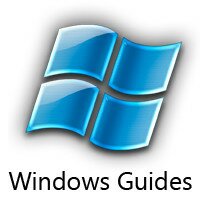Installing Apache, MySQL, and PHP in Windows [How To]
Windows Vista Guides, Windows XP Guides Add commentsIf you would like to build your own website, you can do it on your own computer without putting it online. This can be useful for a number of reasons:
- You don’t have your own web hosting to test with
- You want to test a website before you put it online
- You want to start a website that helps you organize your life, for example, but you don’t always have access to the internet
In this guide, you’ll learn how to set up Apache, MySQL, and PHP on your computer. This will be the base for your website and will create an environment for you to develop in.
This guide is part of the Turning Your Computer into a Local Web Server series. Learn more from the main page.
Installing WAMP on Your Windows Machine
To install WAMP (Windows Apache, MySQL, and PHP) in Windows, do the following:
- Download WAMP here
- Double click on the installer
- Assuming you haven’t installed WAMP before, click Yes
![Installing Apache, MySQL, and PHP in Windows [How To] Installing WAMP in Windows 1](http://img.mywindowspc.com/wg/0902/27wamp/wamp01.png)
- Click Next
![Installing Apache, MySQL, and PHP in Windows [How To] Installing WAMP in Windows 2](http://img.mywindowspc.com/wg/0902/27wamp/wamp02.png)
- Accept the agreement and click Next
![Installing Apache, MySQL, and PHP in Windows [How To] Installing WAMP in Windows 3](http://img.mywindowspc.com/wg/0902/27wamp/wamp03.png)
- I recommend installing in c:\wamp. Click Next
![Installing Apache, MySQL, and PHP in Windows [How To] Installing WAMP in Windows 4](http://img.mywindowspc.com/wg/0902/27wamp/wamp04.png)
- Choose your shortcut icon preferences and click Next
![Installing Apache, MySQL, and PHP in Windows [How To] Installing WAMP in Windows 5](http://img.mywindowspc.com/wg/0902/27wamp/wamp05.png)
- Click Install
![Installing Apache, MySQL, and PHP in Windows [How To] Installing WAMP in Windows 6](http://img.mywindowspc.com/wg/0902/27wamp/wamp06.png)
- WAMP will now install
![Installing Apache, MySQL, and PHP in Windows [How To] Installing WAMP in Windows 7](http://img.mywindowspc.com/wg/0902/27wamp/wamp07.png)
- If prompted, click Open to choose Windows Explorer and your default browser
![Installing Apache, MySQL, and PHP in Windows [How To] Installing WAMP in Windows 8](http://img.mywindowspc.com/wg/0902/27wamp/wamp08.png)
- Leave the default settings unless you have a need to change them and click Next
![Installing Apache, MySQL, and PHP in Windows [How To] Installing WAMP in Windows 9](http://img.mywindowspc.com/wg/0902/27wamp/wamp09.png)
- Click Finish and launch WAMP Server
![Installing Apache, MySQL, and PHP in Windows [How To] Installing WAMP in Windows 10](http://img.mywindowspc.com/wg/0902/27wamp/wamp10.png)
- WAMP will launch. Wait for the WAMP icon to turn white in the notification area
![Installing Apache, MySQL, and PHP in Windows [How To] Installing WAMP in Windows 11](http://img.mywindowspc.com/wg/0902/27wamp/wamp11.png)
- Going to localhost in your browser will bring up the following admin area menu
![Installing Apache, MySQL, and PHP in Windows [How To] Installing WAMP in Windows 12](http://img.mywindowspc.com/wg/0902/27wamp/th_wamp12.png)
Now you’ve learned how to install Apache, MySQL, and PHP on your Windows machine, you may now install Wordpress or Drupal in ten minutes or less.


13 Responses to Installing Apache, MySQL, and PHP in Windows [How To]
heathrowe
Installing Apache, MySQL, and PHP in Windows [How To] http://bit.ly/TrRJx
This comment was originally posted on Twitter
rsvr85
I’m stuck already lol
I know nothing about this sort of thing and i’m really keen to get this moving.
I’ve installed Wamp as directed above but entering localhost into firefox & IE8 it doesn’t bring up the admin area menu. Any help?!
Rich
Ensure WAMP is running. If so, look in the notification area. If WAMP’s icon is anything but white (red or yellow), right click the icon and select “Start All Services”
Does this work?
rsvr85
It was running and yes, it’s white. I just keep getting the wiki page of localhost when i try in FF and diagnose connection problem in IE8
Rich
Things I would do:
1. Ensure you are trying http://localhost/
2. Restart the computer and try again
3. Check your hosts file and ensure 127.0.0.1 is set to localhost (%SYSTEMROOT%\system32\drivers\etc)
4. Ensure there are no sites running in IIS (if you have IIS installed)
5. Uninstall and reinstall WAMP
6. Create an XP VM and install WAMP on it
7. Eat an ice cream
rsvr85
I have 2 hosts files, one hosts.msn and one just hosts. They have the same contents but the one without .msn cannot be saved. (i’ve tried taking ownership too)
Rich
Your file should (at least) look like this:
rsvr85
They both do! lol
Rich
OK. If none of the other suggestions work, I’d take this to the forums and see if anyone can help you there because I have no idea.
Trackbacks (Trackback URL)